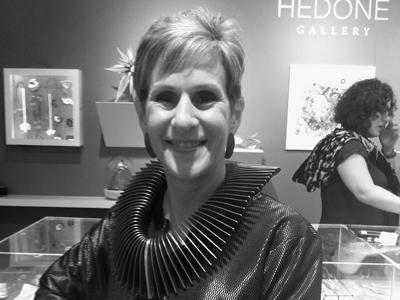
Bonnie Levine: Can you tell us about the work you’re currently presenting at Galerie Rosemarie Jäger? How does it develop your work from the past?
Ike Jünger: In this exhibition I show pieces mainly from the last five years. During this period I developed my work from different starting points. On the one hand I made pieces inspired by nature, and on the other, pieces with strict geometrical shapes and clear colors. Some people may not understand these two different approaches. In my presentation at Rosemarie Jäger, I want to show the connection I see between these two. For example, you can take the geometrical pieces as a reaction to the organic ones. There was a point when I felt there was no progress in my work. It was no longer a challenge to produce these organic brooches. So you might say that one form of expression is a response to the other.
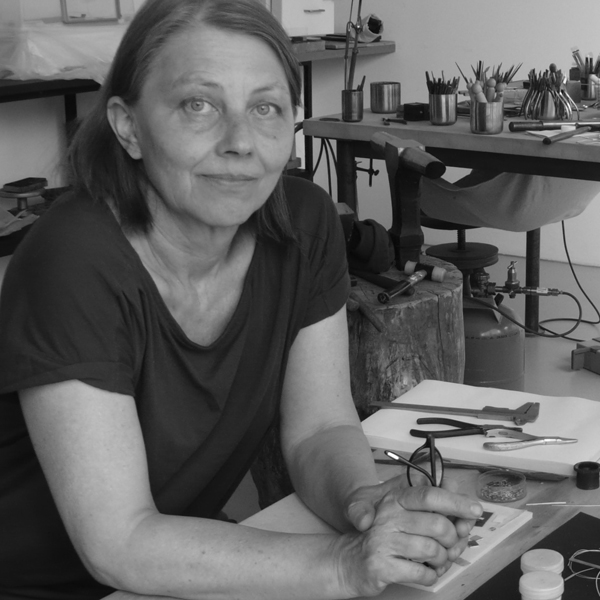
Bonnie Levine: Can you tell us about the work you’re currently presenting at Galerie Rosemarie Jäger? How does it develop your work from the past?
Ike Jünger: In this exhibition I show pieces mainly from the last five years. During this period I developed my work from different starting points. On the one hand I made pieces inspired by nature, and on the other, pieces with strict geometrical shapes and clear colors. Some people may not understand these two different approaches. In my presentation at Rosemarie Jäger, I want to show the connection I see between these two. For example, you can take the geometrical pieces as a reaction to the organic ones. There was a point when I felt there was no progress in my work. It was no longer a challenge to produce these organic brooches. So you might say that one form of expression is a response to the other.
Please tell us about your background and how you became interested in making jewelry.
Ike Jünger: I dropped out of school quite early and started a goldsmith’s apprenticeship. This decision was certainly made under my parents’ influence, since they believed that a strong foundational training as a craftsman was more important than a degree. After my apprenticeship, I began studies at the Gerrit Rietveld Academy, but soon switched to painting classes at the Rijksakademie Van Beeldende Kunsten. After having finished my studies there, it seemed to me that the challenge of the so-called “free arts” was too great. I wanted to return to a workshop setting, work in the trade I had studied, and use basic materials. Unlike paint and brush, these raw materials offer a certain resistance that you have to overcome as a craftsman. Thus they provide you with a kind of guidance. You’re no longer subjected to complete freedom, as in painting, for example. After Amsterdam I moved to Berlin, where I managed to make a living as a goldsmith. Ever since, I have worked in my own workshop.

Your work is primarily enamel, silver, and gold. I’ve read that you’re very interested in shape, color, surface, and material, and how they influence each other. Why is enamel the perfect material for you to use to investigate these ideas? What makes it an expressive and contemporary medium?
Ike Jünger: Enamel is such a versatile material. It comes in all colors and consistencies—from opaque to transparent—and can be applied to all kinds of surfaces. You can give it a shiny touch or make it rough and crackled, apply it thick and evenly, or brush it on ever so lightly. It can have the appearance of a quiet lake or of rough tree bark. For me the limits of enamel lie in the craftsmanship, in the technique of enameling. It’s a constant challenge.
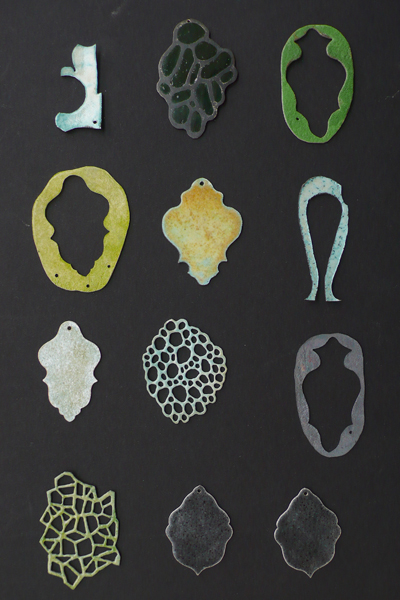
Ike Jünger: In my surroundings, nature is omnipresent … in the garden, on walks or hikes, or even on a traffic island downtown. It doesn’t really matter where exactly, you can always discover details that reflect a certain sensation. When I work, I don’t have a particular plan for how to complete a piece. I’d much rather go with the flow and experiment in different directions until I discover a sign of how to carry on. If I’m lucky, I reach a point of tranquility. A kind of equilibrium or harmony develops and the pieces fit together like a jigsaw puzzle. Then the piece may be complete—often enough, though, it doesn’t happen and it all ends up in the scrap box, or gets re-arranged.
Your father, Hermann Jünger, was a well-known maker and teacher who had a far-reaching influence on the development of contemporary jewelry around the world. What was it like growing up with such a pioneer, and did he influence your work in any way?
Ike Jünger: Although a lot of importance was attached to creativity and aesthetics in our family, I would still consider my childhood and youth as normal. Of course my work was influenced by my father’s work—just as children are always influenced by their parents and vice-versa. Whether this influence is apparent in my work, I find hard to say. I’ve always tried to do things my way and follow my own path. Still, this path is always connected to my family background.
I understand that you and your family are in charge of your father’s estate and are very careful how the work is shown and purchased. Can you tell us something about the family’s goals for the legacy of his work?
Ike Jünger: The last exhibition our father planned was Schmuckstücke-Fundstücke, which offered an overview of his artistic life creations. The opening was in 2006 at the Pinakothek der Moderne in Munich. Unfortunately, our father passed away before the exhibition, but we know that it was his wish to take the show to different museums around the world. In 2009 we took the show to Ghent, and other cities are about to follow, but we still don’t know exactly when and where.
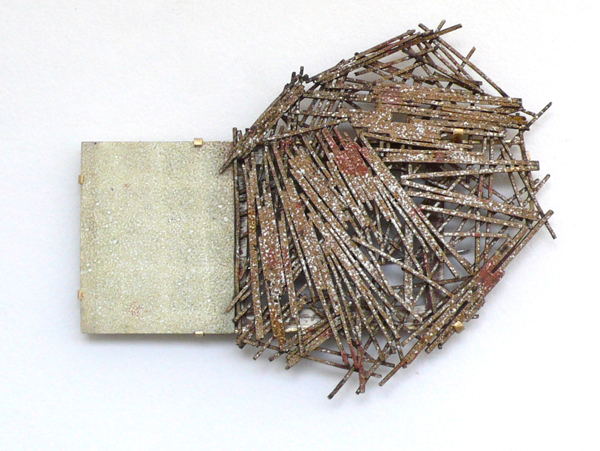
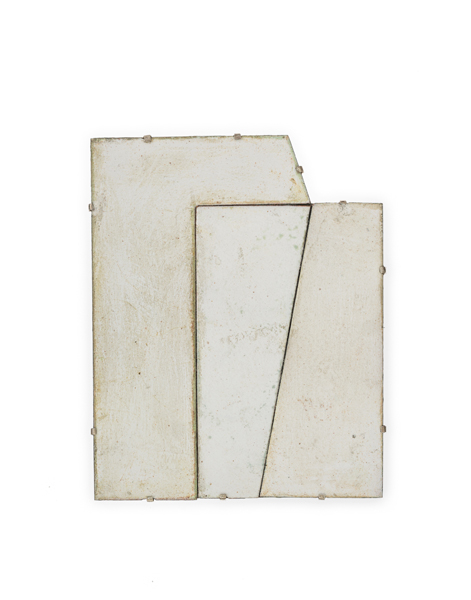
Ike Jünger: It impresses me when a goldsmith’s work reflects how he devotes his attention to a certain topic and redefines his approach again and again and doesn’t stick to his usual means of expression. Onno Boekhoudt’s work is an example of this. In my opinion it shows that he was a questioner. He revolved around a certain issue and researched into the matter from different starting points. I believe that the work process mattered more to him than the final piece.
What have you seen or read recently that made an impact on you that our readers should know about?
Ike Jünger: The exhibition of Per Kirkeby’s graphics at the Pinakothek der Moderne in Munich.
Thank you.
Translation: Alexandra von Mutius
